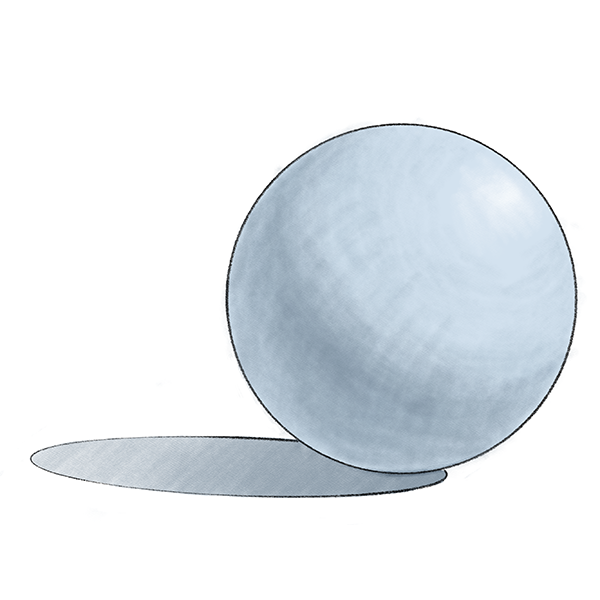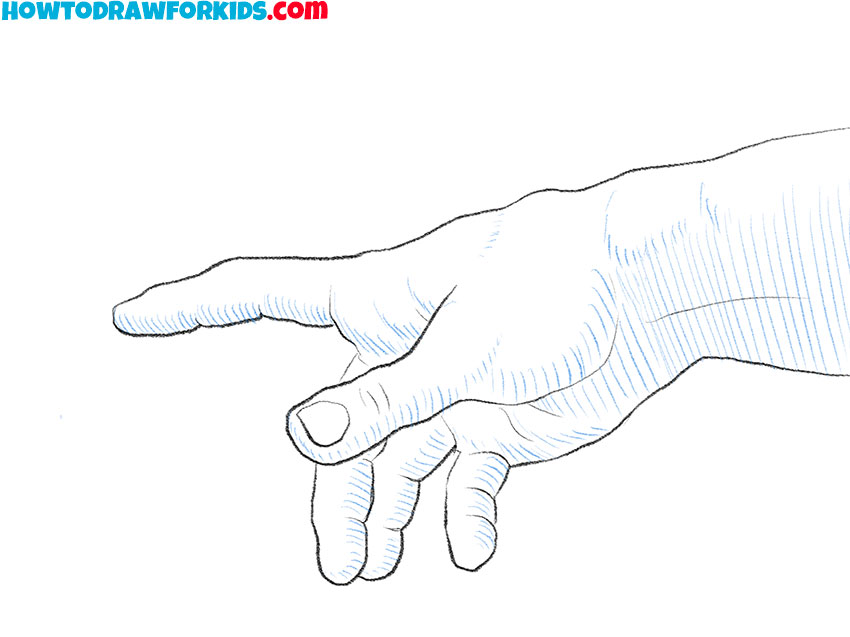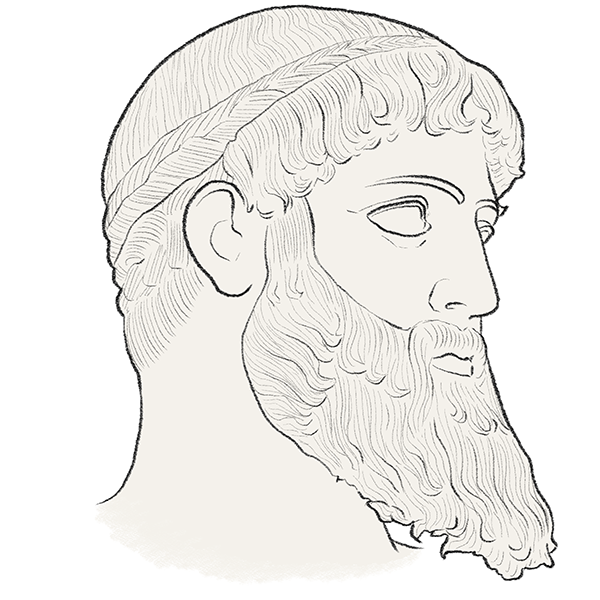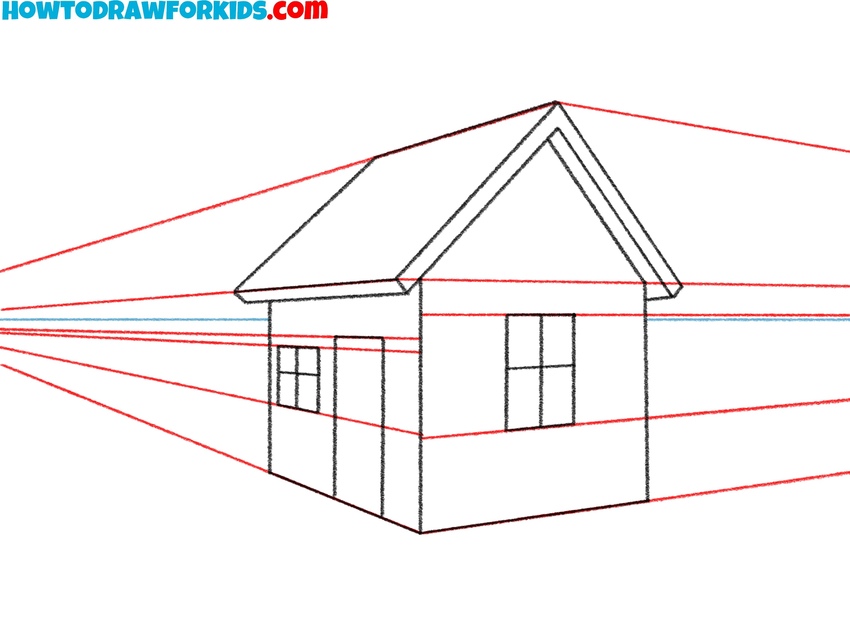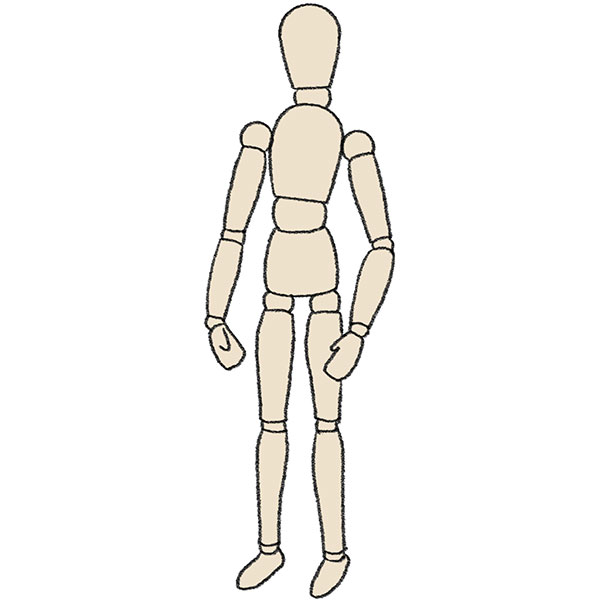Lesson 1: Form, Volume, and Construction
To correctly depict objects on paper or canvas, you need to know what form, volume, and construction are. This article will introduce you to these basic concepts.
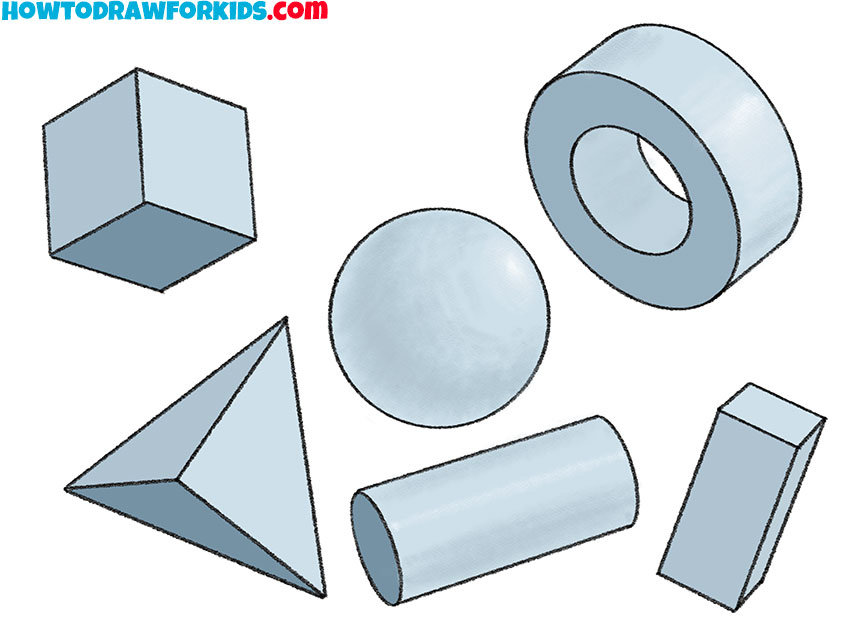
So, the main characteristics of any object are the shape, volume, and construction. These concepts are inextricably linked with each other.
Before you start drawing people, animals, or even simple objects, it’s important to understand three basic concepts: form, volume, and construction. These ideas are the foundation of everything you draw. In this lesson, I’ll explain what each one means and how they help you create drawings that look solid, clear, and real – even if you’re using just a pencil and paper.
Even the most complex subjects are built from basic shapes. Once you learn to see and draw those shapes, everything becomes easier.
What is Form
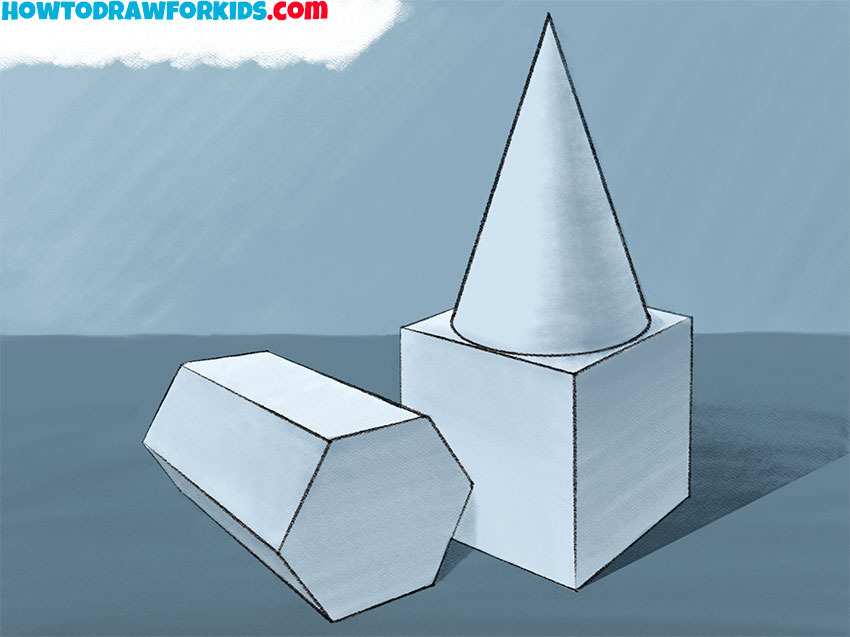
Form is the outline and shape of an object. It shows how the object looks from the outside. It answers the question: What is the outline? Almost everything around you can be simplified into a few basic forms:
- A sphere
- A cube
- A cylinder
- A cone
Understanding form helps you focus not on what an object “is” (an arm, a banana, a shoe), but on how it’s built. You stop drawing what you think you see and start constructing what you actually observe.
These forms give you a simple starting point. They make drawing less confusing, especially when you’re not sure how to begin. Instead of drawing “a tiger’s head,” you might first sketch a circle for the cranium and a smaller oval for the snout. This way, you’re building the drawing, not guessing.
Understanding Volume

While form gives an object its shape, volume gives it mass and space. Volume means the object has height and width. It’s what makes a drawing look solid and dimensional, instead of flat.
To show volume, you need to:
- Use perspective lines to convey space.
- Show the surfaces that turn away from the viewer.
- Apply simple light and shadow – even soft shading makes a big difference.
- Draw ellipses, not circles, when something turns in space.
A square becomes a cube when you draw it with perspective. A flat circle becomes a sphere when you give it tone. These changes help the viewer believe the object exists in real space – that you could reach out and pick it up.
Even simple mistakes – like drawing a box with incorrect angles or placing shadows inconsistently – can destroy the illusion of volume. That’s why learning to visualize and draw form in space is so essential.
What is Construction
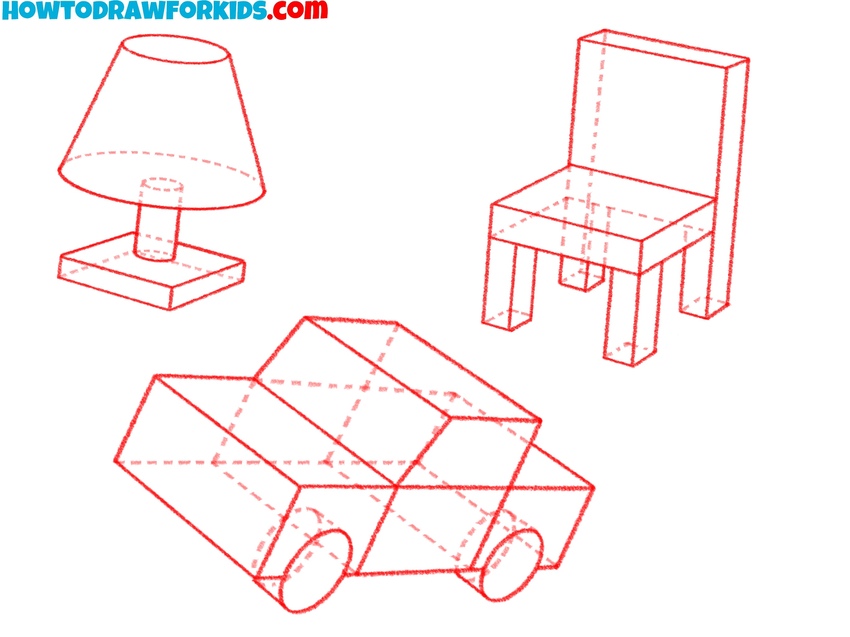
Construction is the process of assembling forms to create complex objects. Instead of drawing a cat in one go, you build it from a circle (head), cylinder (body), and cones (ears). You place these parts in the correct positions and connect them with lines. This is construction.
In construction drawing, you don’t draw the final shape right away. You begin with a framework, loose and simplified, and only after that refine the outlines and details. The early stages might look rough, but they allow you to check:
- Proportions
- Placement
- Relationships between parts
- Perspective and orientation
Think of construction as thinking through the form. You’re not copying, you’re analyzing. Even when drawing from imagination, this process helps maintain accuracy and logic.
The method works the same whether you’re drawing a mug, a lamp, or a human figure. Construction is universal.
Seeng Objects as Simple Forms

One of the most important drawing skills is learning to see through the surface of objects, to mentally simplify them into spheres, cylinders, and cubes.
For example:
- A soccer ball is a sphere.
- A cardboard box is a cube or rectangular prism.
- A pencil is a thin cylinder.
- A party hat is a cone.
- A plane is a long cylinder
The more you train your eye to recognize these building blocks, the easier drawing becomes. It also makes it possible to draw anything from different angles, because you’re thinking in 3D, not just copying outlines.
Practice Form, Volume, and Construction
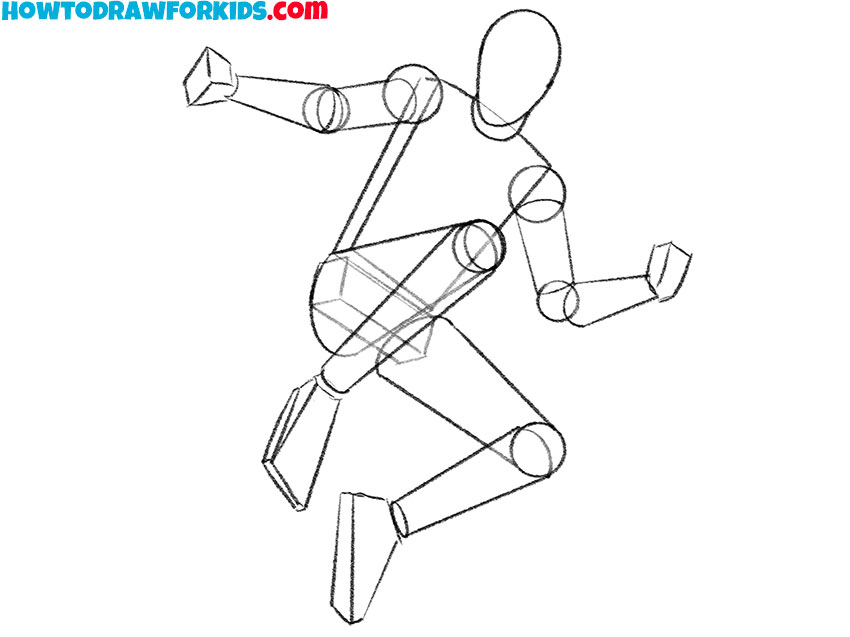
The best way to understand form, volume, and construction is through regular sketching. You don’t need to create full drawings, just concentrate on learning to see the structure inside any object. Here’s how to do this:
- Start with basic shapes. Try drawing a cube, creating a 3d sphere drawing, or sketching cylinder, and a cone from different angles. Don’t just copy what they look like, practice how to turn them in space and how to build them with simple lines.
- Once you feel comfortable drawing these forms on their own, start combining them. Try creating a simple object by putting together two or three shapes. Don’t worry about details, focus on structure and how the forms connect.
- Next, practice drawing these objects lightly and loosely, using construction lines that show the entire form, even the parts that would be hidden from view. Drawing through the form like this helps you better understand its shape in space and leads to more confident sketches.
- It’s also helpful to look around you and analyze real-world objects. Try to mentally reduce them to simple forms before you draw them. A chair might be made of boxes and cylinders. A toy car might be built from a rectangular base and round wheels.
- Finally, repeat these exercises often, but don’t rush through them. Take time to compare angles, check proportions, analyze the shapes. Over time, you’ll start to think in three dimensions every time you sketch, and you’ll be able to build more complex drawings from the inside out.
Conclusion
Form, volume, and construction are not advanced topics, they are the basic language of drawing. Once you understand how to simplify and build any subject with these tools, you can draw anything.
Whether you’re drawing from real life or imagination, always start by identifying the form, thinking through its volume, and building it with clear construction. These steps make the difference between random outlines and a solid, confident drawing.
As you move forward in this course, keep practicing these principles. They will help you with every object, character, animal, or environment you draw.

